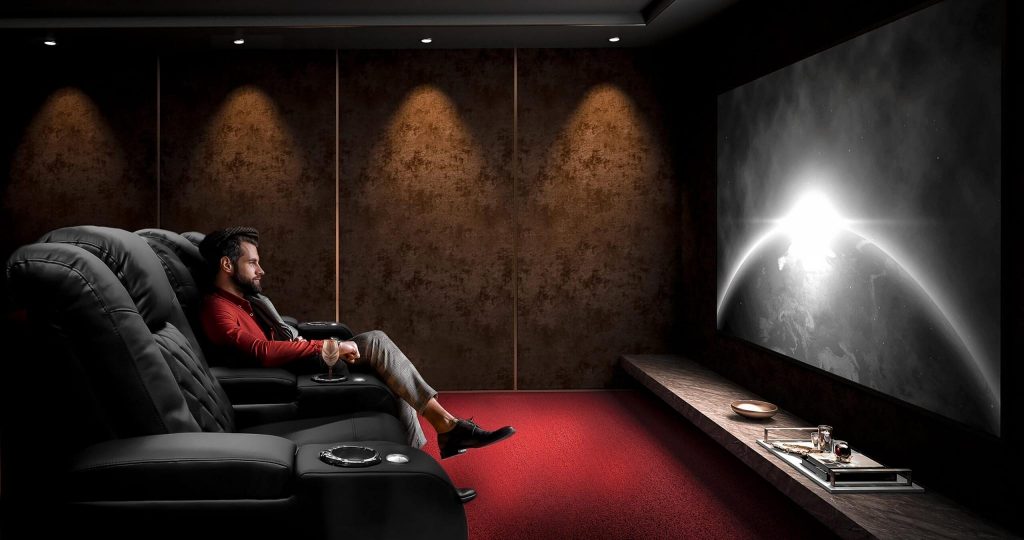You could have some amazing theater seats like the Bern from Valencia, but if your screen isn’t good, the movie experience will not be either. You need to make sure the screen that the movie is displayed on provides you with a clear and crisp image. If you are using a projector, you may think that all the video quality comes from the projector, but the projector screen also has a very big part to play as well. If the screen is low quality, it will warp the images that are being projected onto it. This blog post is here to introduce you to 3 key characteristics that are important when it comes to picking your projector screen.

Reflectiveness
Projectors work by shining light on a screen which reflects the image and light back to the audience. Thus the reflectiveness, how well a screen reflects, is very important when selecting an screen. If your projector screen does not reflect light well the image ill become dim and hard to see. It will also be hard to see the image at angles that are not directly straight on. The solution is to get a screen that reflects well. Some screens like Elunevision’s Reference EVO 8k NanoEdge are made of a reflective that has been woven in a way to maximize reflection. The reflective fibers are woven in a diamond shape which is able to reflect almost all light back to the viewer with a stunning amount of contrast.
When buying your screen you need to look into how reflective the screen material is. If you do not buy a reflective screen you will regret it in the end because the loss in quality.
Perforation
Perforations refer to tiny holes spread throughout the projector screen. You may be wondering “Why would anyone want to have holes in their screen, would that ruin the image?”. The thing is that the perforations do not rein the image. the perforations are so small that the image still looks incredibly clear. But that still begs the question: Why would you want perforations. There is one simple answer: speakers. The perforations allow sound to flow through the screen without losing any audio quality. Materials like Elunevision’s AudioWeave allow sound to pass through the screen perfectly.
The reasoning or this perforated technology is so that speakers can be placed behind the screen. Having speakers in this position make it seem like sound is coming directly from the screen, giving you a more immersive experience. You only need to consider if you want perforations in your screen if you plan on putting speaker behind your screen. If you have a smaller theater space, putting speakers behind the screen can save a lot of space. These are the things you need to consider when looking at purchasing a perforated screen.
Fixed or Tab-Tension?
The third thing you need to consider the structure of the screen. There are typically 2 main types of structures for screens: fixed and tab-tension. A fixed frame screen is similar to a TV. You build it and mount the whole screen on the wall. It is not easily stored away, it is fixed in that position unless you take it apart and move it. These screens are good for a dedicated home theater where you do not plan on moving the screen. If you do not want a massive screen to always present you can get a tab tension screen. These are the kind of projector screen that can be rolled up, either through tension and springs, or through using a motor. These screens stay straight using a tab tension technology which prevent the screen from moving and ruining the image.
When consider if you want a fixed or tab-tension screen you need to consider how much space you have. If you can allows have your screen present, a fixed screen is the way to go. If you thing the screen will take up too much space and you think you will only be able to whip it out here and there go with a tab tension screen.
There is a lot more to know about screens but knowing these 3 things will help you figure out what kind of screen you need for your home theater set up.
